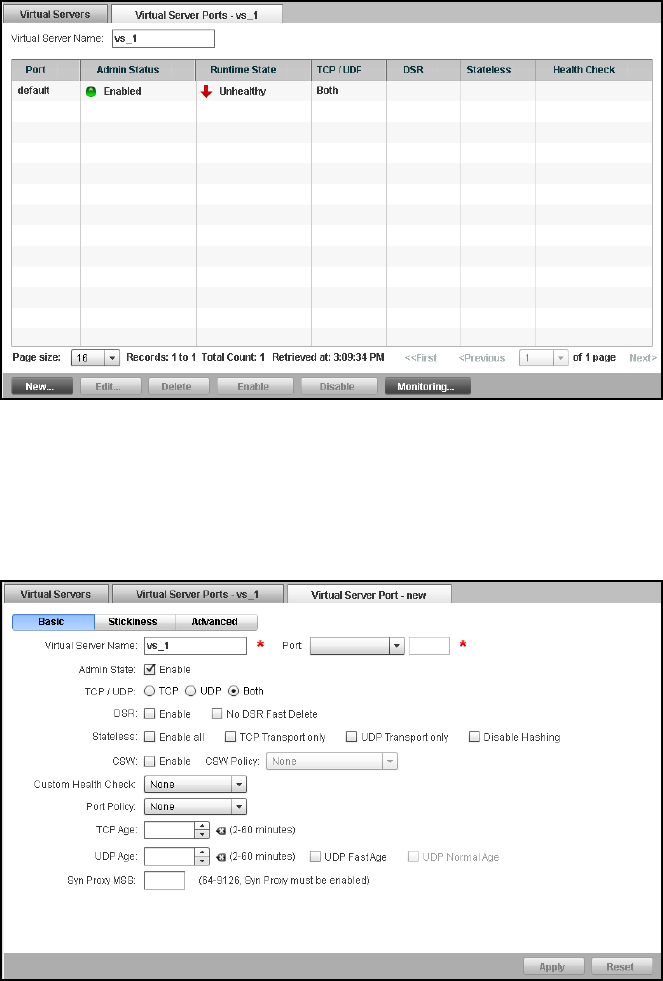(Supporting ADX v03.1.00) Owner's manual
Table Of Contents
- Contents
- Preface
- Introduction to the Brocade Virtual ADX Web Interface
- Navigating the Web Interface
- Navigating the Dashboard
- Configuration Overview
- System Settings
- Network Settings
- Traffic Settings
- GSLB Settings
- Security Settings
- Monitoring Overview
- Viewing System Information
- Viewing Network Status
- Viewing Traffic Statistics
- Viewing Security Statistics
- Maintenance Overview
- Managing Software Images
- Restarting the System
- License Management
- Packet Capture
- Accessing the CLI
- Retrieving System Information for Technical Support
- Troubleshooting
- Config Template XML Schema
- Managing Config Templates through the CLI

72 Brocade Virtual ADX Graphical User Interface Guide
53-1003242-01
Virtual servers
7
3. Select a virtual server from the list in Virtual Servers table and click Ports.
The Virtual Server Ports page tab is displayed, as shown in Figure 58.
FIGURE 58 Virtual server ports
The Virtual Server Ports page displayed a list of configured virtual server ports. Each entry in
the list includes port name, runtime state, protocol, backup, and heath check status.
4. Click New at the bottom of the Virtual Server Ports page. The Basic tab is displayed, as shown
in Figure 59.
FIGURE 59 Configuring virtual server ports
5. Under the Basic tab, provide the following information:
• Virtual Server Name: Enter the name of the virtual server.
• Port: Select the port you want to add to the virtual server.
• Admin State: Deselect the Enable check box to disable the virtual server port. By default,
admin state is enabled.










